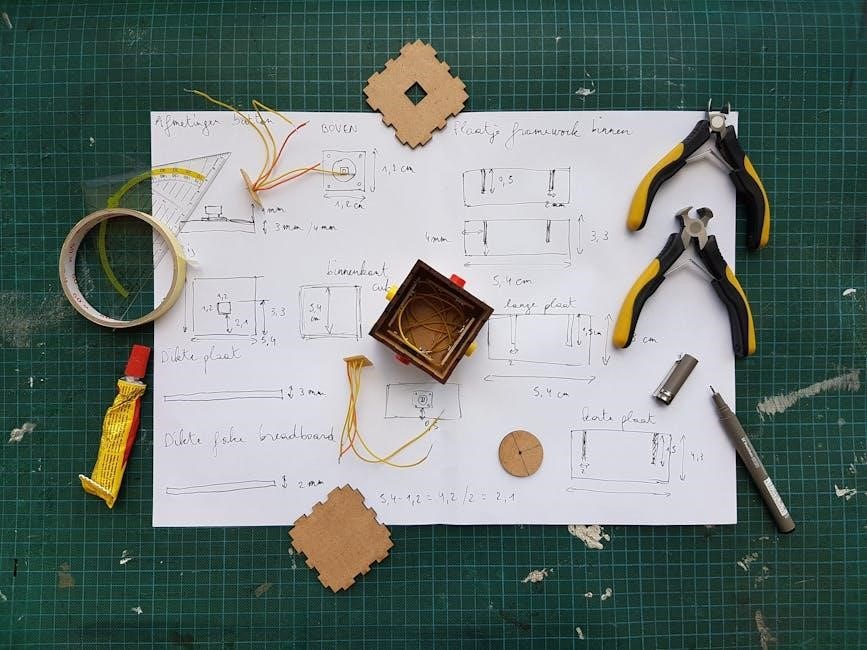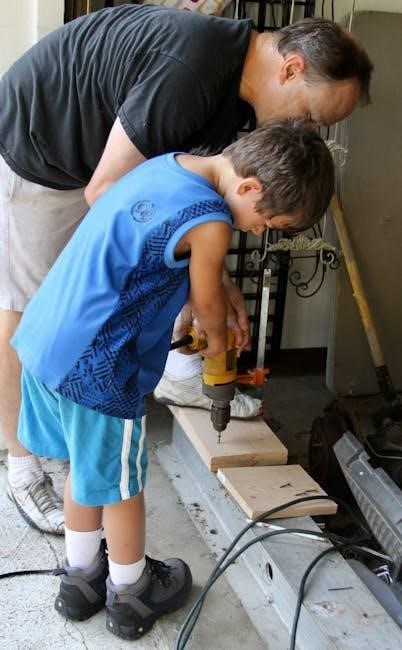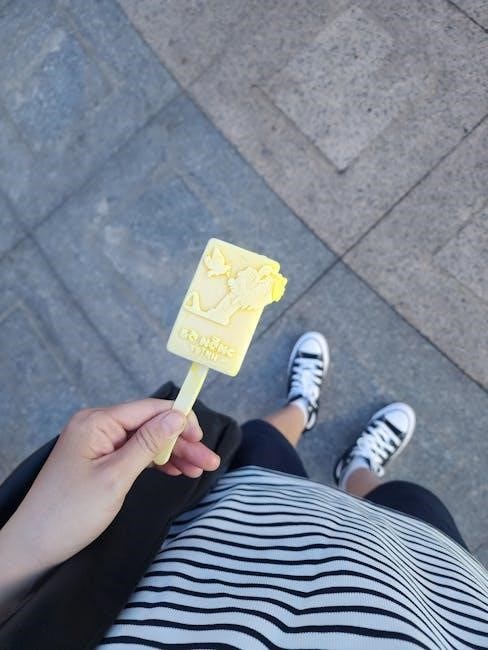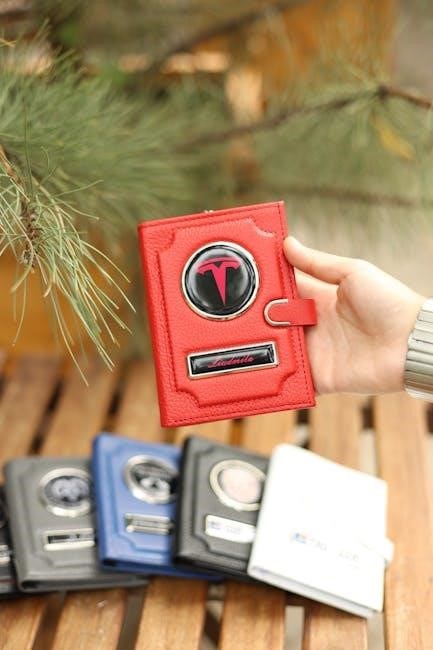park city winter trail map pdf
Park City’s winter trail system offers over 50 km of groomed trails, ideal for cross-country skiing, snowshoeing, and fat-tire biking, across 3,300 acres of scenic terrain.
Overview of Park City’s Winter Trails
Park City’s winter trails span over 50 km of groomed paths, offering diverse routes for cross-country skiing, snowshoeing, and fat-tire biking. The system features 8 beginner, 42 intermediate, and 50 expert trails, catering to all skill levels. The Homerun Trail, stretching 3.5 miles, is the longest and most popular route. Trails are meticulously maintained to ensure optimal conditions for winter sports. The network connects to Park City’s historic Main Street via lifts and scenic runs, blending outdoor adventure with cultural exploration. With interactive 3D maps and downloadable PDF guides available, visitors can easily navigate and plan their winter adventures in this picturesque mountain destination.
Importance of the Trail Map for Winter Activities
The Park City winter trail map is essential for navigating the extensive network of groomed trails, ensuring safe and enjoyable experiences. It provides detailed information on trail lengths, difficulty levels, and access points, helping users choose routes suited to their skills. The map also highlights key amenities, such as parking areas, ski patrols, and rental services. By referencing the map, visitors can avoid unmarked paths, track grooming schedules, and stay informed about trail conditions. This resource is indispensable for planning and optimizing winter adventures in Park City’s stunning mountain landscape, making it a must-have for all outdoor enthusiasts.
Types of Winter Trails and Activities
Park City’s winter trail system features groomed paths for cross-country skiing, snowshoeing, and fat-tire biking, offering diverse experiences across its extensive network of scenic trails.
Cross-Country Skiing Trails
Park City offers an extensive network of cross-country skiing trails, perfect for both novice and advanced skiers. The trails are meticulously groomed, ensuring smooth and enjoyable skiing experiences. With over 50 kilometers of trails, skiers can explore diverse landscapes, from serene meadows to challenging uphill climbs. The Homerun Trail, spanning 3.5 miles, is a popular choice, while shorter loops cater to those seeking shorter adventures. The trail system is well-marked, with clear signage guiding skiers through the winter wonderland. Rentals and lessons are available for those new to the sport, making Park City a welcoming destination for all skill levels.
Snowshoeing Routes
Park City’s snowshoeing routes offer a serene way to explore the winter landscape, with trails suitable for all skill levels. The groomed paths provide stability and traction, allowing visitors to enjoy the peaceful surroundings. Many routes overlap with cross-country skiing trails, offering diverse scenery and challenges. The Homerun Trail is a popular choice, while shorter loops provide accessible adventures. Snowshoeing is an excellent way to immerse oneself in nature, with rentals and guided tours available for those new to the sport. The trail map PDF ensures easy navigation, making Park City a premier destination for snowshoeing enthusiasts seeking winter adventure and relaxation.
Fat-Tire Biking Paths
Park City’s fat-tire biking paths provide a unique winter experience, with specially designed bikes allowing riders to glide over snow-covered trails. The groomed routes are tailored for fat-tire bikes, offering a mix of smooth terrain and challenging sections. Trails like the Homerun Trail and shorter loops cater to both beginners and experienced riders. The PDF trail map highlights designated fat-tire biking paths, ensuring riders can easily navigate the network. Rentals are available for those without their own bikes, making Park City a hub for this exciting winter sport, combining adventure with breathtaking mountain views.

Trail Difficulty Levels
Park City’s winter trails offer a variety of difficulty levels, from beginner to expert, ensuring all skill levels can enjoy the scenic routes. The system includes 8 beginner, 42 intermediate, and 50 expert trails, with the Homerun Trail being the longest at 3.5 miles.
Beginner-Friendly Trails
The beginner trails in Park City are meticulously designed for those new to winter sports, offering gentle slopes and smooth terrain. These trails are perfect for learning cross-country skiing, snowshoeing, or fat-tire biking. The system includes 8 beginner trails, each crafted to provide a safe and enjoyable experience. Clear signage and markings ensure easy navigation, allowing users to focus on building their skills. The groomed surfaces are well-maintained, making the trails accessible and fun for all ages. This network is an excellent starting point for anyone looking to explore Park City’s winter wonderland without feeling overwhelmed.
Intermediate Trails
Park City’s intermediate trails offer a step up from beginner routes, featuring varied terrain and moderate challenges. With 42 trails designed for those with some experience, these paths provide a mix of rolling hills, slight elevation changes, and scenic vistas. Trails like “Quit N Time” and “Creole” are popular choices, offering a balance of excitement and manageable difficulty. The intermediate trails are well-groomed, ensuring smooth conditions for cross-country skiing, snowshoeing, or fat-tire biking. These trails are perfect for building confidence and improving skills while enjoying the stunning winter landscapes of Park City.
Expert and Challenging Trails
Park City’s expert trails are designed for advanced winter sports enthusiasts, offering steep terrain, technical challenges, and breathtaking views. With 50 trails classified as expert, these routes demand skill and physical fitness. The Homerun Trail, spanning 3.5 miles, is a standout for its demanding inclines and thrilling descents. These trails cater to cross-country skiing, snowshoeing, and fat-tire biking, providing adrenaline-pumping experiences. Expert trails often feature narrow paths, sharp turns, and significant elevation changes, making them perfect for those seeking to push their limits in a stunning winter setting.

Popular Winter Trails in Park City
Park City’s winter trail system offers over 50 km of groomed trails for cross-country skiing, snowshoeing, and fat-tire biking, with connectivity to Main Street and scenic viewpoints.
Highlighting Key Trails
Park City’s winter trail network features a variety of routes for all skill levels. The Homerun Trail, a 3.5-mile path, is a standout for its length and scenic views. Other popular trails include the Quit N Time and Creole runs, which offer direct access to historic Main Street. These trails are meticulously groomed, ensuring optimal conditions for cross-country skiing, snowshoeing, and fat-tire biking. The system’s connectivity provides seamless exploration of Park City’s natural beauty, making it a hub for winter enthusiasts. The trails cater to both recreational and competitive users, fostering a vibrant outdoor community.
Longest Trail: Homerun Trail
The Homerun Trail stands out as the longest trail in Park City’s winter network, spanning 3.5 miles of scenic terrain. It is a favorite among cross-country skiers and winter enthusiasts, offering a mix of groomed paths and breathtaking views. This trail is part of the 50km groomed trail system, connecting users to other routes and providing endless exploration opportunities. Its length and accessibility make it a highlight for both locals and visitors, showcasing Park City’s commitment to providing world-class winter experiences. The Homerun Trail exemplifies the city’s dedication to outdoor recreation and natural beauty.

Trail Conditions and Grooming
Park City’s winter trails are meticulously maintained, with daily grooming ensuring smooth surfaces for cross-country skiing, snowshoeing, and fat-tire biking, enhancing the overall winter experience.
How Trails Are Maintained
Park City’s trails are maintained by a dedicated team using specialized grooming equipment. Trails are regularly groomed to ensure smooth surfaces for cross-country skiing, snowshoeing, and fat-tire biking. Grooming schedules are typically daily, with adjustments made based on snow conditions and usage. The process involves leveling, tilling, and compacting the snow to create an optimal surface for winter sports. Maintenance also includes clearing debris, marking trails, and ensuring accessibility for all users. This meticulous upkeep ensures trails remain safe and enjoyable throughout the winter season, catering to both beginners and experienced outdoor enthusiasts.
Grooming Schedules
Grooming schedules for Park City’s winter trails are typically daily, ensuring optimal conditions for users. Trails are groomed early in the morning to prepare for the day’s activities. Schedules may vary based on snowfall, temperature, and trail usage. The Park City Mountain Resort and local trail organizations publish grooming schedules on their official websites and at trailhead information boards. Some trails are groomed more frequently than others, depending on popularity and difficulty level. Staying informed about grooming schedules helps users plan their outings effectively and enjoy the best possible trail conditions throughout the winter season.

Downloading the Trail Map
Download the Park City winter trail map PDF from the official website for detailed routes, trail lengths, and difficulty levels, ensuring a seamless winter adventure experience.
Accessing the PDF Map
To access the Park City winter trail map PDF, visit the official website or trusted trail resources. The map is free to download and provides detailed information on trail routes, lengths, difficulty levels, and scenic highlights. It covers over 50 km of groomed trails, including cross-country skiing, snowshoeing, and fat-tire biking paths. The PDF is regularly updated to reflect current trail conditions and grooming schedules. Users can print the map or access it digitally on mobile devices for easy navigation. The map also includes interactive features, such as zooming and trail filtering, to enhance planning and exploration of Park City’s winter trail system.
Understanding the Map Legend
The Park City winter trail map PDF includes a detailed legend to help users interpret trail information effectively. The legend identifies trail difficulty levels, marked by color-coded symbols: green for beginner, blue for intermediate, and black for expert trails. It also distinguishes trail types, such as cross-country skiing, snowshoeing, and fat-tire biking routes, using unique icons. Lifts, including surface lifts, rope tows, and chairlifts, are clearly marked, along with key locations like first aid stations and ski patrol areas. The legend also highlights important symbols for services, such as rental shops and dining options, ensuring users can navigate the map with ease.

Navigation and Safety
Trail markers and clear signage guide users through Park City’s winter trails. Always stay alert, respect others, and share responsibility for safety on the slopes.
Trail Markers and Signage
Park City’s winter trails are well-marked with clear signage, including trail names, difficulty levels, and directional arrows. Signs indicate ski area boundaries and restricted zones, ensuring safe navigation. Trail markers provide essential information, helping users stay on course. Digital and physical maps, including the downloadable Park City Winter Trail Map PDF, complement on-the-ground signage. These resources ensure visitors can easily explore the 3,300-acre terrain, from beginner-friendly paths to expert trails. Clear signage enhances the overall winter sports experience, promoting safety and accessibility for all users across the vast trail network.
Safety Tips for Winter Sports

Ensuring safety is crucial when enjoying Park City’s winter trails. Always wear appropriate gear, including helmets and warm clothing. Check trail conditions before heading out and stay informed about weather changes. Carry a map, water, and snacks, and inform someone of your itinerary. Respect trail closures and follow posted signs. Be aware of other users and yield when necessary. For skiing and snowboarding, control speed and avoid collisions. Stay within ability levels to prevent accidents. Familiarize yourself with emergency procedures and know the location of first aid stations. By prioritizing safety, visitors can fully enjoy the trails while protecting themselves and others.
Parking and Access Points
Park City offers multiple parking areas near trailheads, including Resort Base and Legacy Lodge, ensuring easy access to winter trails for all visitors.
Location of Parking Areas
Park City provides several convenient parking areas near key trailheads, ensuring easy access to winter trails. The Resort Base Area and Legacy Lodge offer ample parking, while smaller lots are located near popular trailheads like the Quit N Time and Creole runs. These parking areas are strategically placed to minimize walking distance to trail entrances. Visitors can also find additional parking near the Town Lift, connecting to Park City’s historic Main Street. The Park City Winter Trail Map PDF highlights these locations, allowing users to plan their visits efficiently. Parking areas are well-marked and accessible, making it straightforward for winter sports enthusiasts to begin their adventures.
Accessing Trailheads
Trailheads in Park City are easily accessible, with many located near parking areas and key landmarks. The primary trailheads are situated near the Resort Base Area and Legacy Lodge, offering direct access to groomed trails. Additional trailheads, such as those near the Town Lift, provide convenient entry points to the trail system. The Park City Winter Trail Map PDF clearly marks these locations, ensuring visitors can quickly find their starting points. Well-marked signs and paths guide users from parking lots to trailheads, making the process seamless for winter sports enthusiasts of all skill levels. This accessibility enhances the overall winter recreation experience in Park City.

Interactive Map Features

The Park City winter trail map offers interactive 3D maps, real-time grooming updates, and trail filters for activity type, enhancing navigation and planning for winter enthusiasts.
Using Online Trail Maps
Online trail maps provide interactive features like real-time grooming updates, trail filters, and 3D views, making it easier to plan and navigate Park City’s winter trails efficiently.
Interactive 3D Maps
Interactive 3D maps offer a immersive way to explore Park City’s winter trails, allowing users to visualize terrain, plan routes, and discover hidden gems with detailed elevation and trail data.

Official Partners and Services
Park City’s winter trail system is supported by official partners offering uniforms, payments, and granola bars, ensuring a well-equipped and enjoyable experience for all trail users.
Partners Supporting Park City Trails
Park City’s winter trail system is supported by various official partners, including uniform, payment, and granola bar partners. These collaborators enhance the trail experience by providing essential services and products. The National Sports Center and other local businesses contribute to maintaining the trails and ensuring user safety. Their support enables the grooming and upkeep of over 50 km of trails, making Park City a premier destination for winter sports. These partnerships highlight the community’s commitment to preserving and improving the trail network for all users.
Rental and Lesson Services
Park City offers extensive rental and lesson services for winter sports enthusiasts. Local shops provide high-quality equipment rentals, including skis, snowshoes, and fat-tire bikes. Ski schools and guided programs cater to all skill levels, from beginners to advanced athletes. Lessons are available for cross-country skiing, snowshoeing, and biking, ensuring everyone can enjoy the trails confidently. These services are conveniently located near trailheads and resort bases, making it easy to access the 50 km of groomed trails. Rentals and lessons enhance the overall winter sports experience, promoting safety and skill development in Park City’s scenic environment.
Winter Events and Competitions
Park City hosts various winter events, including races and festivals, leveraging its Olympic heritage. It features historical venues from the 2002 Winter Games, attracting athletes and spectators annually.
Upcoming Winter Events
Park City hosts a variety of exciting winter events, showcasing its Olympic legacy. The 2002 Winter Games venues continue to attract athletes and spectators for races and competitions. Cross-country skiing races, snowshoeing competitions, and fat-tire biking events are highlights, drawing enthusiasts worldwide. Festive atmosphere, live music, and local food add to the charm. These events celebrate winter sports while promoting community engagement. Visitors can enjoy thrilling competitions, family-friendly activities, and explore the city’s vibrant culture. Check the official Park City Mountain website for event schedules and plan your visit to experience world-class winter sports in a stunning setting.
Historical Olympic Venues
Park City proudly hosted the 2002 Winter Olympics, with its mountain resort serving as a premier competition site. The venue featured cross-country skiing and snowboarding events, attracting global attention. Today, the Olympic legacy lives on, with many trails and facilities still in use. Visitors can explore the historic sites, now integrated into the winter trail system. The resort covers 3,300 acres, offering a mix of recreational and competitive opportunities. While some areas remain closed to the public, others are accessible for skiing and snowshoeing, allowing guests to experience the Olympic spirit firsthand in a breathtaking mountain setting.
Contact Information and Resources
For inquiries, visit parkcitymountain.com or contact directly at (435) 649-8111. Additional resources and downloadable maps are available on the official website for planning your winter activities.
Reaching Out for Information
For detailed inquiries about Park City’s winter trail system, visitors can contact the Park City Mountain Resort directly at (435) 649-8111. Additionally, the official website parkcitymountain.com provides comprehensive resources, including downloadable trail maps and up-to-date information on trail conditions. The website also features an interactive map tool, allowing users to explore trails virtually before heading out. Furthermore, the Mountain Trails Foundation offers support and additional trail information through their platform mountaintrails.org. These resources ensure that visitors are well-prepared for their winter adventures in Park City.
Additional Resources for Planning
For comprehensive planning, visitors can explore the Park City Chamber of Commerce website, which offers insights into local accommodations, dining, and events. The Mountain Trails Foundation blog provides updates on trail maintenance and user stories. Additionally, the Park City Municipal Corporation website includes detailed maps and guides for winter sports. Interactive tools like 3D trail maps and real-time grooming trackers are available on mountaintrails.org. These resources, along with community forums and local guide services, help ensure a well-prepared and enjoyable winter adventure in Park City.






























